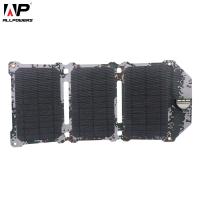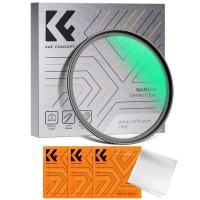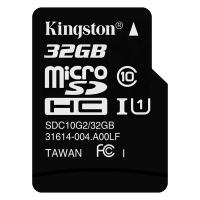How Do You Charge A Blink Camera Battery ?
As the world increasingly turns to renewable energy sources to combat climate change, solar panels have become a popular choice for generating clean electricity. However, as the first generation of solar panels reaches the end of its life cycle, a new challenge emerges: what to do with the old panels. Can solar panels be recycled? The answer is yes, but the process is complex and still evolving. This article will delve into the intricacies of solar panel recycling, the current state of the industry, and the challenges and opportunities that lie ahead.

The Composition of Solar Panels
To understand the recycling process, it's essential to know what solar panels are made of. The most common type of solar panel is the crystalline silicon panel, which consists of several key components:
1. Silicon Cells: These are the heart of the panel, responsible for converting sunlight into electricity.
2. Glass: Covers the silicon cells to protect them from the elements.
3. Aluminum Frame: Provides structural support.
4. Plastic Layer: Encapsulates the silicon cells to keep them in place.
5. Copper Wiring: Conducts the electricity generated by the silicon cells.
Each of these materials has its own recycling process, making the overall recycling of solar panels a multi-step endeavor.
The Recycling Process
The recycling of solar panels can be broken down into several stages:
1. Collection and Transportation: The first step is to collect the old or damaged solar panels and transport them to a recycling facility. This step is crucial for ensuring that the panels do not end up in landfills.
2. Disassembly: Once at the facility, the panels are disassembled. The aluminum frame and the glass cover are removed first. The aluminum is relatively easy to recycle and can be reused in various industries. The glass, which makes up a significant portion of the panel's weight, can also be recycled, although it requires specialized equipment to remove any contaminants.
3. Separation of Silicon Cells: The next step involves separating the silicon cells from the plastic encapsulant. This is often done using thermal, chemical, or mechanical processes. Thermal processes involve heating the panels to high temperatures to melt the plastic, while chemical processes use solvents to dissolve it. Mechanical processes, on the other hand, involve physically breaking down the panels to separate the materials.
4. Purification and Reuse: Once the silicon cells are separated, they need to be purified before they can be reused. This often involves chemical treatments to remove any impurities. The purified silicon can then be used to manufacture new solar panels or other silicon-based products.
5. Recycling of Other Materials: The remaining materials, such as copper wiring and plastic, are also recycled. Copper is a valuable metal and can be easily reused, while the plastic can be processed into new plastic products.
Current State of Solar Panel Recycling

The solar panel recycling industry is still in its infancy, but it is growing rapidly. In Europe, the Waste Electrical and Electronic Equipment (WEEE) Directive mandates the recycling of solar panels, and several companies have emerged to meet this demand. In the United States, the situation is more fragmented, with some states implementing their own recycling programs while others have yet to address the issue.
One of the leading companies in solar panel recycling is Veolia, which operates a dedicated recycling plant in France. The plant uses a combination of mechanical and thermal processes to recycle up to 95% of the materials in a solar panel. Other companies, such as First Solar, have developed their own recycling programs, focusing primarily on thin-film solar panels, which have a different composition than crystalline silicon panels.
Challenges and Opportunities
While the technology for recycling solar panels exists, several challenges need to be addressed to make it more widespread and efficient:
1. Economic Viability: The cost of recycling solar panels can be high, and in many cases, it is cheaper to produce new panels than to recycle old ones. This economic barrier needs to be overcome to make recycling more attractive.
2. Regulatory Framework: A lack of standardized regulations and policies can hinder the growth of the recycling industry. Governments need to implement clear guidelines and incentives to promote recycling.
3. Technological Advancements: Continued research and development are needed to improve the efficiency and cost-effectiveness of recycling processes. Innovations in material science and recycling technology can help address this issue.
4. Public Awareness: Many consumers and businesses are still unaware of the importance and feasibility of recycling solar panels. Public awareness campaigns can help increase participation in recycling programs.
Despite these challenges, there are significant opportunities in the solar panel recycling industry. As the demand for solar energy continues to grow, so will the need for recycling solutions. Companies that invest in recycling technology and infrastructure now will be well-positioned to benefit from this emerging market.

Conclusion
In conclusion, solar panels can indeed be recycled, but the process is complex and still evolving. The current state of the industry shows promise, with several companies and countries taking the lead in developing recycling solutions. However, challenges such as economic viability, regulatory frameworks, technological advancements, and public awareness need to be addressed to make solar panel recycling more widespread and efficient. As the world continues to shift towards renewable energy, the importance of recycling solar panels will only grow, making it a critical component of a sustainable future.









































